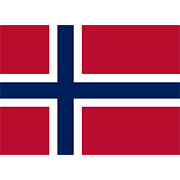Fiscal subject related
Here are some of the main things you should know about the retail operating hours in Norway:
- On weekdays, you can generally open your shop from 10 a.m. to 6 p.m., but you may choose to open earlier or close later, depending on your type of business and your customer demand. For example, if you run a supermarket, you may open at 7 a.m. or 8 a.m. and close at 8 p.m. or 10 p.m.
- On Saturdays, you can generally open your shop from 10 a.m. to 4 p.m. or 5 p.m., but you may choose to close earlier or later, depending on your type of business and your customer demand. For example, if you run a supermarket, you may open at 8 a.m. or 9 a.m. and close at 6 p.m. or 8 p.m.You may also shorten your opening hours on Saturdays, until 2 p.m. or 3 p.m., to reduce your costs or to give your staff a break.
- On Sundays, you must generally close your shop, unless you have special permission from the local authorities or you fall under an exemption. Only shops with a sales area of less than 100 square meters are allowed to open on Sundays, and only for a maximum of six hours. For example, if you run a small grocery store, you may open from 10 a.m. to 4 p.m. or 11 a.m. to 5 p.m. on Sundays. You may also open your shop on Sundays if you sell certain goods, such as flowers, plants, newspapers, or souvenirs, or if you are located in a tourist area or a transport hub.
- On public holidays, you must generally close your shop unless you have special permission from the local authorities or you fall under an exemption. Public holidays in Norway include New Year's Day, Maundy Thursday, Good Friday, Easter Sunday, Easter Monday, Labor Day, Constitution Day, Ascension Day, Whit Sunday, Whit Monday, Christmas Eve, Christmas Day, and Boxing Day. You may also close your shop early on the day before a public holiday, to prepare for the holiday or to give your staff a break.
The retail operating hours in Norway may vary depending on the location, season, and type of business. You should also display your opening hours clearly and visibly on your shop window or door and on your website or social media pages, if you have any. You should also update your opening hours whenever there is a change in regulations or customer demand.
Other news from Norway
TLv6 Implementation Marks Significant Shift in EU’s Trust List Format
A new EU Trust List format, TLv6, will officially replace TLv5 in May 2025 as part of the updated eIDAS Regulation (EU 2024/1183). It introduces key technical changes like a new URI field, updated signature format, and optional phone number support. Organizations must update their systems to avoid signature validation failures and service disruptions, as TLv5 will no longer be valid once TLv6 take... Read more



Goods exported from the Norwegian VAT Area are exempt from VAT.
 Norway
Author: Nikola Novković
Norway
Author: Nikola Novković
Norway has introduced new VAT exemption provisions for private firms exporting goods, requiring stricter documentation and digital signatures for compliance. The updated regulation mandates detailed transaction records, verified buyer identification, and proper export documentation, ensuring transparency and better VAT refund processing. To ensure better compliance with legal requirements and im... Read more



Navigating SAF-T: Differences Between Norway's and Denmark's Tax Reporting
 Norway
Author: Ivana Picajkić
Norway
Author: Ivana Picajkić
Norway and Denmark both use the Standard Audit File for Tax (SAF-T) but with different implementation approaches and requirements. Norway's SAF-T, mandatory since 2020, is submitted only upon request, while Denmark's SAF-T is part of ongoing digital bookkeeping obligations with set deadlines. Read more



Norway: Everything You Need to Know About the VAT System
 Norway
Author: Ivana Picajkić
Norway
Author: Ivana Picajkić
Norway requires businesses with annual revenue exceeding 50,000 NOK to register for VAT, with rates ranging from 25% for most goods to 0% for select services like newspapers and international transport. VAT returns are typically submitted bi-monthly, with strict invoicing requirements and potential penalties for non-compliance. Read more



Norway Launches Evaluation for Mandatory E-Invoicing and Digital Bookkeeping
 Norway
Author: Ivana Picajkić
Norway
Author: Ivana Picajkić
The Norwegian Ministry of Finance has launched an evaluation on implementing mandatory e-invoicing and digital bookkeeping, with initial proposals expected by June 2025. This initiative aims to enhance efficiency, align with EU standards, and potentially save businesses over NOK 5 billion annually by adopting a framework similar to Denmark’s system. The Norwegian Ministry of Finance has initiated... Read more



Understanding the Importance and Benefits of E-Invoicing in Norway
 Norway
Author: Ivana Picajkić
Norway
Author: Ivana Picajkić
E-invoicing is a key element of Norway’s digital transformation, enhancing efficiency, transparency, and compliance across B2B, B2G, and B2C transactions. It is mandatory for all suppliers to public sector entities, requiring adherence to Norwegian standards and use of formats like EHF and Peppol BIS Billing 3.0. Read more



Reminder: Norway Announced New VAT Rates for 2025
 Norway
Author: Ivana Picajkić
Norway
Author: Ivana Picajkić
Norway has announced updated VAT rates effective January 1, 2025, including a standard rate of 25% and reduced rates of 15%, 12%, and 11.11% for specific goods and services. These changes aim to align tax policy with economic objectives and sector-specific support. The Norwegian Official Gazette announced the VAT rates for 2025, which will take effect on January 1, 2025. The standard VAT rate is... Read more


